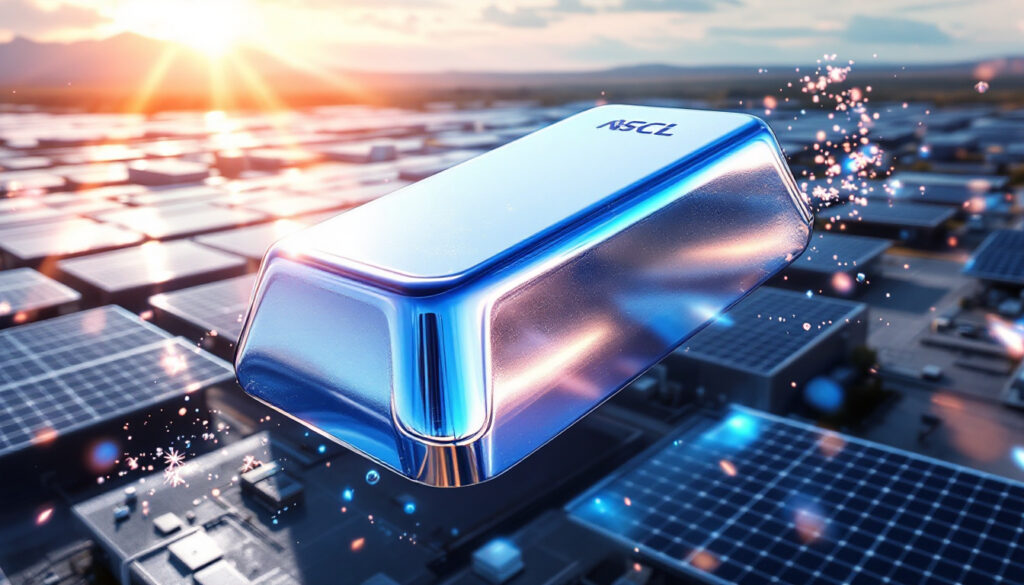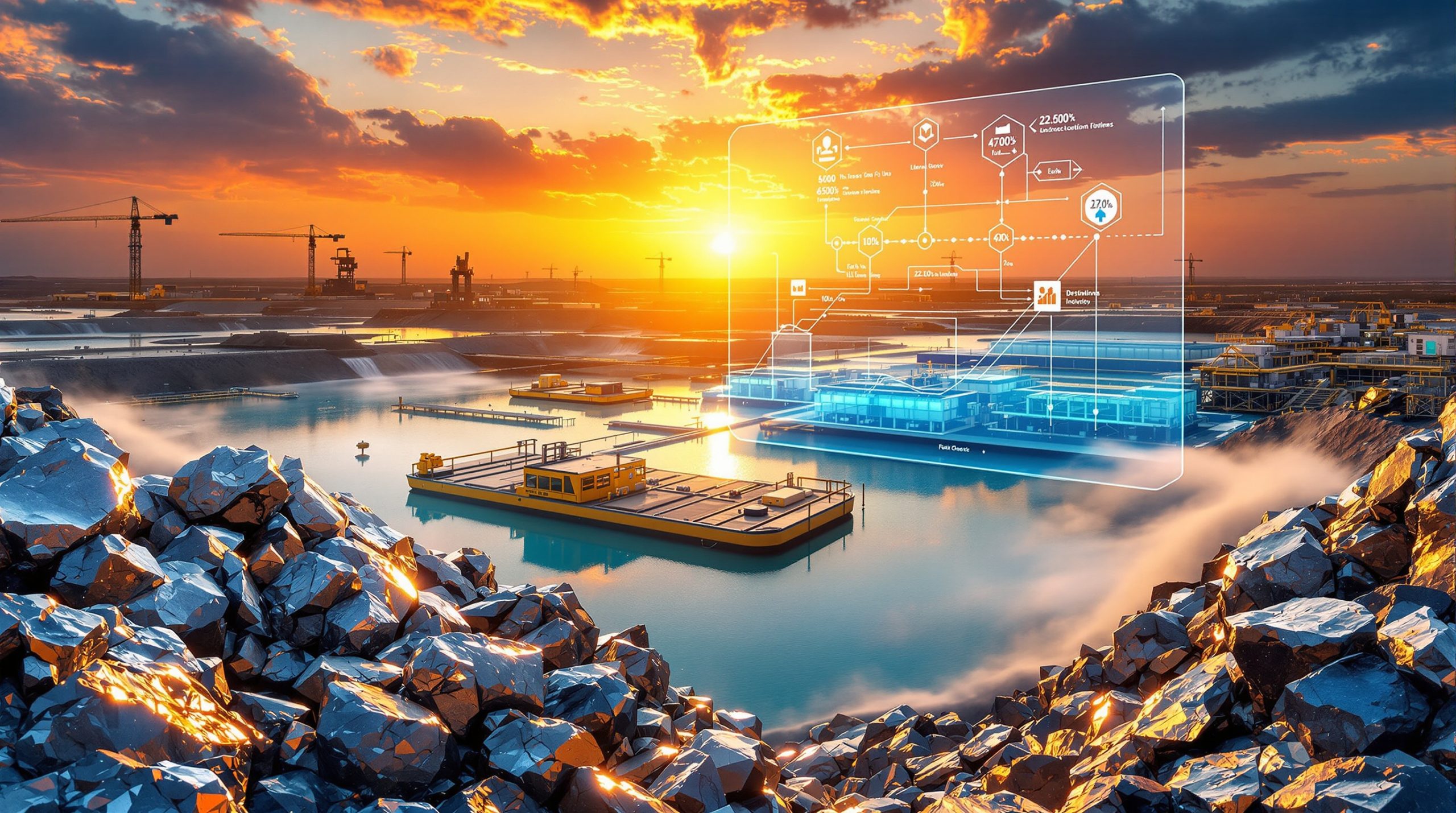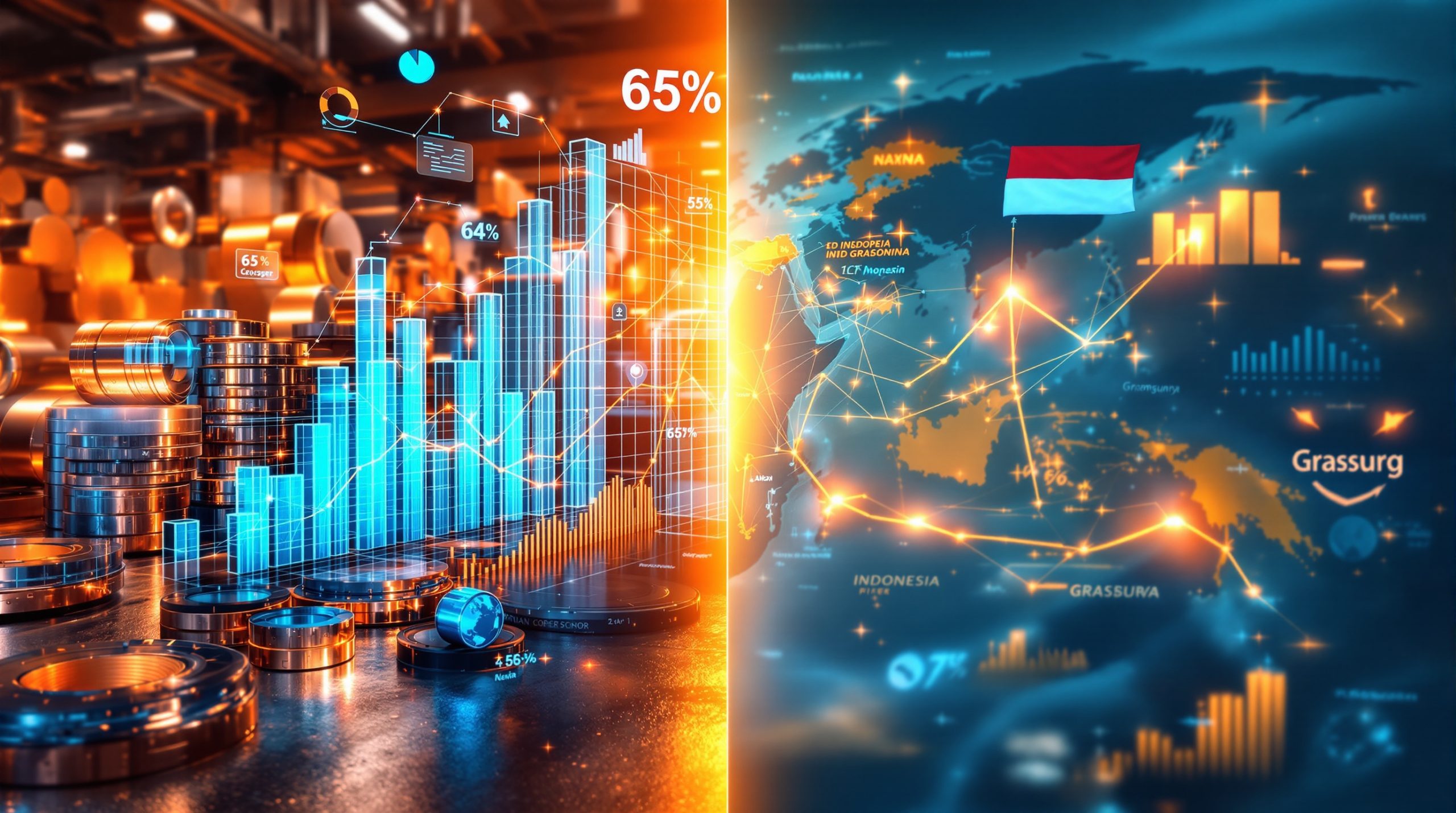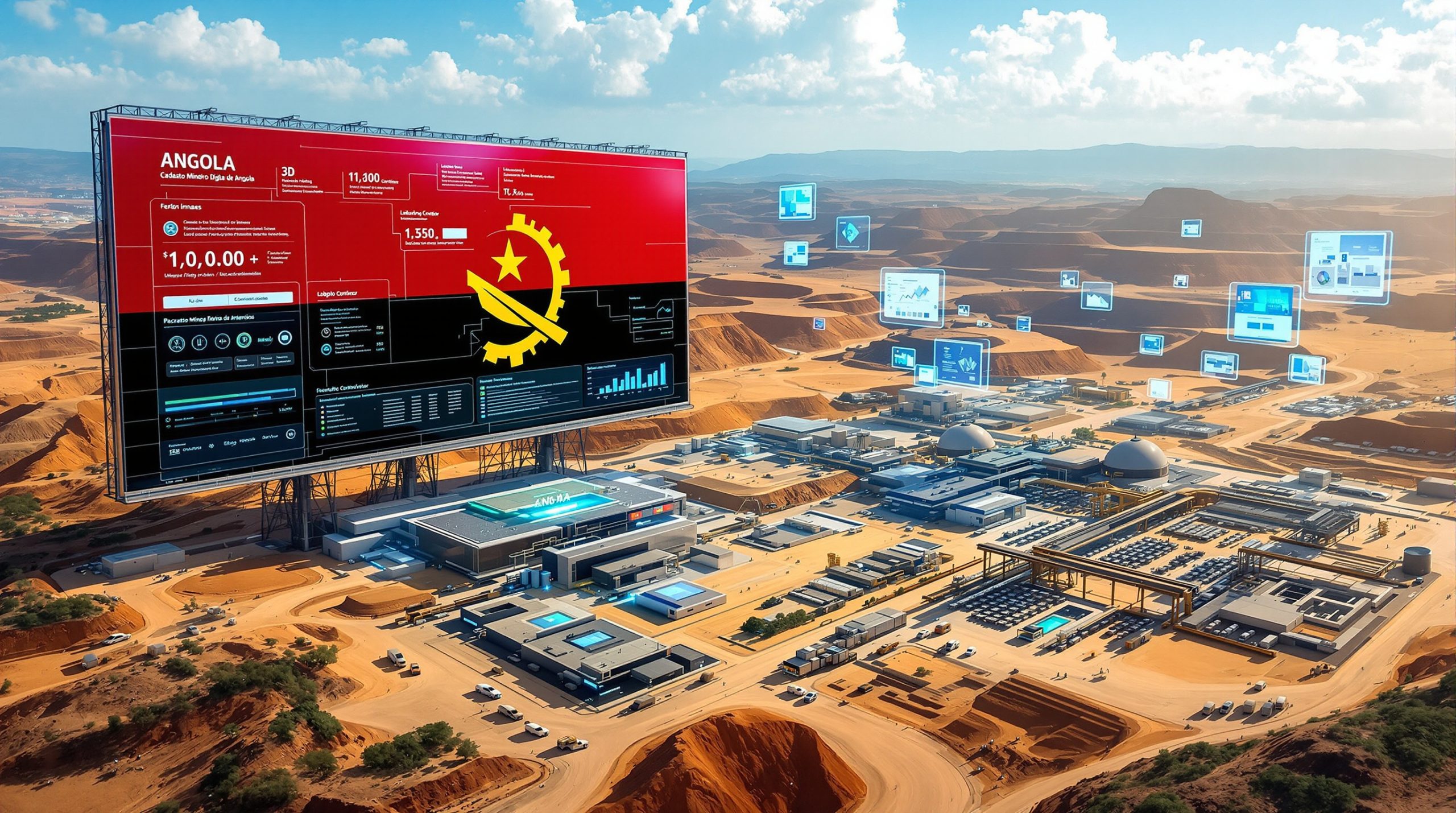The Expanding Role of Industrial Demand in Silver Mining
Silver has long been prized for its luster and investment value, but today's market tells a different story. The metal's industrial applications have dramatically reshaped demand dynamics, creating a fundamental shift in the global silver market that investors and industry observers cannot afford to ignore.
What is Driving Industrial Silver Demand?
The transition from silver as primarily a precious metal to an essential industrial commodity represents one of the most significant market evolutions of the past decade. This shift stems from silver's unique physical and chemical properties that make it virtually irreplaceable in several high-growth technological applications.
Key Industrial Applications Reshaping Silver Markets
Silver's industrial consumption has been transformed by several critical growth sectors:
- Photovoltaic technology: Solar panels require high-purity silver for electrical contacts and conductive pathways, making the renewable energy sector the largest industrial consumer of silver globally
- Advanced electronics: Silver's unmatched electrical conductivity makes it essential in everything from smartphones to data centers
- Electric vehicle production: The average EV contains 25-50g of silver—significantly more than conventional vehicles—used in battery management systems, electrical connections, and sensors
- Medical devices: Silver's antimicrobial properties have expanded its use in healthcare applications, from wound dressings to surgical instruments
- Water purification: Silver ions effectively eliminate bacteria and viruses, driving adoption in both municipal and point-of-use filtration systems
- Industrial catalysts: Silver catalysts accelerate chemical reactions in manufacturing processes for products ranging from plastics to pharmaceuticals
According to the World Silver Survey 2025, these applications collectively pushed industrial demand in silver mining from consuming just 51% of global mine production in 2014-2015 to an astonishing 83% by 2024.
Technological Innovation Fueling Consumption
Silver's dominance in industrial applications stems from its unique physical properties that remain unmatched by potential substitutes:
- Electrical conductivity: Silver exhibits the highest electrical conductivity of any element, making it irreplaceable in applications requiring minimal energy loss
- Thermal conductivity: Silver efficiently distributes heat, critical for preventing failure in high-performance electronics and power systems
- Reflective properties: Silver reflects nearly 95% of visible light, making it essential in solar applications and specialized optics
- Antimicrobial efficacy: Silver ions disrupt bacterial cell membranes through mechanisms that don't promote resistance, unlike antibiotics
- Solderability: Silver-based solders create reliable electrical connections with exceptional longevity and performance characteristics
These properties make silver uniquely positioned to benefit from continued technological advancement, particularly as global economies pursue decarbonization and digitalization strategies.
How Has Industrial Silver Demand Changed Over Time?
The evolution of silver demand represents one of the most significant transitions in the metal's 5,000-year history. What was once primarily valued for currency, jewelry, and tableware has undergone a remarkable transformation into an essential industrial commodity.
Historical Trends in Industrial Silver Consumption
The quantitative shift in industrial silver demand tells a compelling story:
- 2014-2015: Industrial applications represented approximately 51% of global mine production
- 2022: This figure rose to approximately 70% as technological applications expanded
- 2024: Current industrial consumption has reached 83% of total mine output
- 2025 (Projected): Expected to maintain 81% of production, according to the World Silver Survey 2025
This transformation has occurred despite significant efficiency improvements in silver usage across many applications. For example, modern solar cell designs use 60-75% less silver per unit than designs from a decade ago, yet total consumption continues rising due to exponential growth in deployment.
Sector-by-Sector Growth Analysis
Not all industrial sectors contribute equally to silver's demand growth:
- Photovoltaic sector: Experiencing the most dramatic growth trajectory, with silver consumption rising at double-digit annual rates despite thrifting efforts
- Electronics manufacturing: Maintaining steady consumption patterns, with miniaturization balanced by proliferating device numbers
- Automotive industry: The transition to EVs has created substantial new demand channels, with each electric vehicle containing up to five times more silver than conventional vehicles
- Medical applications: Showing consistent 3-5% annual growth as antimicrobial properties find new applications
- Water purification: Emerging as a significant growth area, particularly in developing economies with limited clean water infrastructure
This sectoral distribution highlights silver's unique position at the intersection of multiple significant technological trends—renewable energy, electrification, digitalization, and healthcare innovation.
What Impact Does Renewable Energy Have on Silver Markets?
The global transition to renewable energy represents perhaps the single most transformative force in contemporary silver markets. Solar photovoltaic technology has emerged as the dominant industrial application for silver, creating both new demand certainties and technological challenges.
Solar Energy's Silver Intensity
Modern solar cell production demands substantial quantities of high-purity silver:
- Conductive elements: Silver paste forms the grid lines and bus bars on solar cells that collect and transmit electricity
- Silver content evolution: Average usage has decreased from approximately 400-500 mg per cell to 100-200 mg in modern designs
- Efficiency trade-offs: Manufacturers balance silver reduction against performance impacts, as reduced silver content can lower cell efficiency
- Regional differences: Chinese manufacturers typically use 15-20% less silver per panel than Western producers, though often with slight efficiency penalties
- Technological innovation: Heterojunction (HJT) cells promise higher efficiency but currently require up to 30% more silver than conventional cells
Despite significant efforts to reduce silver content per panel (known as "thrifting"), the exponential growth in solar deployment continues driving overall consumption upward. The International Energy Agency reports global solar capacity additions reached approximately 350 GW in 2023—requiring substantial silver inputs despite efficiency improvements.
"The solar industry has succeeded in reducing silver intensity per watt, but the sheer scale of deployment continues driving silver demand to new heights. Each gigawatt of solar capacity still requires approximately 1,000 kg of silver, creating significant market implications as installations accelerate." — World Silver Survey 2025
Energy Transition's Broader Silver Requirements
While solar dominates renewable silver demand, the broader energy transition creates additional consumption channels:
- Wind power: Silver usage appears primarily in specialized electrical contacts and control systems
- Energy storage: Advanced battery technologies increasingly incorporate silver components for performance enhancement
- Smart grid infrastructure: Grid modernization requires silver-intensive sensors, switches, and control systems
- Efficiency improvements: Next-generation renewable technologies may initially require more silver as they push performance boundaries
- Cross-technology comparison: Solar remains significantly more silver-intensive than other renewable technologies, using approximately 10x more silver per megawatt than wind power
The energy transition's silver demand presents unique market dynamics, as deployment timelines are increasingly driven by policy decisions and climate commitments rather than traditional price sensitivity factors.
How Are Electronics and Semiconductors Affecting Silver Demand?
The electronics sector represents silver's most established industrial application, yet continues evolving as new technologies emerge. Silver's role in this sector has proven remarkably resilient despite ongoing miniaturization and substitution efforts.
Silver's Critical Role in Advanced Electronics
Silver performs several irreplaceable functions in modern electronics:
- Semiconductor manufacturing: High-purity silver is essential for conductive layers in advanced chips
- Printed circuit boards: Silver pastes create reliable electrical pathways with minimal resistance
- Miniaturization impacts: While individual device silver content has declined, proliferating device numbers maintain overall demand
- Consumer electronics: The average smartphone contains approximately 0.3g of silver, with newer models incorporating additional silver-based components for advanced features
- Industrial controls: Industrial electronics typically contain 5-10x more silver than consumer devices due to reliability requirements in harsh operating environments
Despite ongoing efficiency improvements, the semiconductor industry's growth—approximately 6% annually according to industry association SEMI—continues supporting silver demand. This relationship highlights the metal's critical role in enabling the digital economy.
Emerging Technologies Driving Consumption
Several technological frontiers are creating new silver demand vectors:
- 5G infrastructure: Base stations and specialized components require silver for high-frequency signal transmission with minimal loss
- Internet of Things (IoT): Connected sensors and devices typically contain 10-50mg of silver each, with billions of deployments expected
- Artificial intelligence hardware: Data centers and specialized AI processors incorporate silver-based cooling systems to manage extreme heat generation
- Quantum computing: Research platforms utilize silver's superconducting properties when cooled to specific temperatures
- Generational comparison: 5G devices contain approximately 40% more silver than 4G predecessors, suggesting technological advancement often increases rather than decreases silver intensity
These emerging applications indicate the electronics sector's silver demand has significant growth potential despite mature applications facing efficiency pressures.
What is the Impact of Electric Vehicles on Silver Markets?
The automotive industry's electrification represents one of silver's most promising growth vectors. Electric vehicles require substantially more silver than conventional vehicles, creating a structural demand shift as global transportation electrifies.
Silver Components in EV Manufacturing
Electric vehicles incorporate silver across multiple critical systems:
- Battery management systems: Silver-based connections ensure reliable power delivery under extreme temperature variations
- Electric motor components: Silver enhances conductivity in high-stress electrical connections
- Charging infrastructure: Each DC fast-charging station contains 10-15 times more silver than the average EV
- Advanced driver assistance systems (ADAS): Silver-intensive sensors enable safety and autonomous features
- Comparative content: The average battery-electric vehicle contains 25-50g of silver versus 15-28g for internal combustion engines
This increased silver intensity creates a multiplier effect on demand as EV adoption accelerates. While thrifting efforts continue, the complexity of electric powertrains creates fundamental silver requirements that cannot be easily engineered away.
Market Growth Projections and Silver Demand
Electric vehicle market dynamics suggest significant silver demand growth:
- Adoption acceleration: Major markets like Europe and China report 20-30% annual EV sales growth, with similar trajectories expected through 2030
- Battery technology impacts: Next-generation solid-state batteries may require additional silver for thermal management and conductivity
- Charging network expansion: Each 350kW DC fast charger contains approximately 500g of silver, with millions of installations planned globally
- Recycling potential: End-of-life EVs will eventually create a silver recycling stream, though meaningful volumes remain 10-15 years distant
- Material competition: Aluminum occasionally displaces silver in non-critical EV applications, but performance requirements protect most high-value applications
These trends suggest automotive silver demand could double by 2030 even with moderate thrifting success, creating significant implications for long-term market balances.
How Does Industrial Demand Affect Silver Supply-Demand Balance?
The dramatic increase in industrial silver consumption has fundamentally altered market dynamics, creating potential structural imbalances as demand growth outpaces production capabilities.
Mine Production Trends and Constraints
Global silver mine production faces several significant limitations:
- Production statistics: Annual mine supply has remained relatively flat at approximately 800-850 million ounces despite rising prices
- Primary vs. byproduct dynamics: Only 27% of silver comes from primary silver mines, with most production tied to base metal mining economics
- Regional distribution: Latin America accounts for over 50% of global production, creating geographic concentration risks
- Cost structures: The average all-in sustaining cost for primary silver mines reached $18-20/oz in 2023, limiting production flexibility
- Exploration challenges: New silver discoveries have declined by approximately 60% over the past decade despite increased exploration spending
These supply constraints create potential market tightness as industrial demand continues growing. Unlike gold, where above-ground stocks easily meet consumption needs, silver's industrial consumption permanently removes significant metal from circulation annually.
Supply Challenges Meeting Industrial Growth
Several structural factors complicate the silver supply response:
- Mine depletion: Many major silver mines face declining grades, with average ore grades falling approximately 1.5% annually
- Grade deterioration: The global average silver mine grade has declined from over 500 g/t in the 1970s to under 150 g/t today
- Permitting hurdles: New mine development increasingly faces 8-10 year timelines from discovery to production due to regulatory requirements
- Political considerations: Over 40% of global silver production occurs in jurisdictions with elevated political risk profiles
- Energy transition ironies: Mining operations face rising energy costs and carbon reduction pressures while producing materials essential for decarbonization
These challenges suggest supply growth will struggle to match industrial demand expansion, potentially creating persistent deficits if industrial consumption continues its current trajectory.
What Role Does Silver Recycling Play in Meeting Industrial Demand?
Recycling represents a critical but limited contributor to silver supply, providing approximately 20-25% of annual metal availability. This secondary supply stream faces both opportunities and significant constraints as industrial consumption evolves.
Recycling Contribution to Total Supply
Silver recycling exhibits several distinct characteristics:
- Recovery rates: Industrial silver recycling achieves 80-95% recovery efficiency in controlled manufacturing environments
- Electronics contribution: End-of-life electronics recycling provides approximately 50 million ounces annually, with significant growth potential
- Solar panel recycling: Early-stage development shows 90%+ silver recovery potential, though meaningful volumes remain years distant
- Price sensitivity: Recycling volumes typically increase 5-8% during periods of elevated prices
- Process improvements: Advanced hydrometallurgical processes have improved recovery economics for low-grade sources
The recycling contribution remains meaningful but insufficient to offset primary production constraints. Unlike aluminum or copper, where recycled material constitutes over 30% of supply, silver's diverse applications and small quantities per device complicate collection economics.
Challenges and Opportunities in Silver Recovery
Several factors limit silver recycling's growth potential:
- Collection infrastructure: Consumer electronics recovery rates remain below 20% in most markets despite improvement efforts
- Technical complexities: Modern devices contain silver in increasingly complex assemblies that complicate separation
- Economic thresholds: Materials containing less than 100 ppm silver often remain uneconomic to recycle despite technical feasibility
- Regulatory landscape: Extended producer responsibility regulations show promise for improving collection rates but face implementation challenges
- Technology improvements: Emerging biological leaching techniques may eventually improve economics for previously unrecoverable sources
While recycling will continue providing an essential supply supplement, its growth potential faces inherent limitations that prevent it from fully offsetting mining constraints.
How Does Industrial Demand Affect Silver Investment Markets?
The dramatic shift toward industrial consumption has profound implications for silver's investment characteristics, potentially transforming its market behavior from primarily a precious metal to an industrial commodity with increasing supply constraints.
Changing Market Dynamics for Investors
Industrial demand creates several investment-relevant market shifts:
- Available supply: Reduced silver availability for investment as industrial demand claims 83% of mine production
- Volatility patterns: Increasing correlation between silver prices and industrial production metrics
- Competitive dynamics: Industrial users typically continue purchasing during price increases, creating competition with investment demand
- Physical premiums: Retail silver products commanded 20-30% premiums over spot prices during recent supply constraints
- Market signals: Backwardation (spot prices exceeding futures prices) has occurred with increasing frequency, indicating physical tightness
These dynamics suggest silver's investment thesis increasingly incorporates industrial fundamentals rather than purely monetary or inflation-hedge characteristics. While gold maintains relatively stable annual demand regardless of price, silver's industrial consumption creates potential price acceleration when supply cannot expand sufficiently. This situation could potentially lead to a silver market squeeze if industrial and investment demand both increase simultaneously.
Long-term Investment Implications
Several structural factors merit investor consideration:
- Supply deficit projections: Current industrial growth trends suggest potential deficits exceeding 100 million ounces annually by 2027
- Above-ground stocks: Estimated at approximately 3 billion ounces (excluding jewelry), providing some buffer against short-term shortages
- Monetary policy sensitivity: Silver maintains significant correlation with gold during major monetary events despite increasing industrial character
- Industrial correlation: Silver exhibits over 75% price correlation with copper during periods of strong industrial growth
- Gold comparison: Silver's industrial role creates fundamentally different supply-demand dynamics than gold, where annual mine production represents less than 2% of above-ground stocks
These factors suggest silver may increasingly display hybrid investment characteristics—maintaining precious metal correlations during financial stress while incorporating industrial supply-demand fundamentals during normal market conditions. Understanding various silver pricing strategies becomes essential for investors in this evolving market.
What Future Trends Will Shape Industrial Silver Demand?
Looking beyond current applications, several emerging technological frontiers suggest silver's industrial role may continue expanding. These potential growth vectors could further pressure supply-demand balances if they achieve commercial scale.
Emerging Technologies on the Horizon
Several nascent applications show significant silver demand potential:
- Advanced robotics: Next-generation robots incorporate silver-based sensors and highly reliable electrical connections
- Space technology: Aerospace applications leverage silver's performance in extreme environments, with each satellite containing 100-600g
- Biotechnology innovations: Silver nanoparticles show promise in targeted drug delivery systems and advanced diagnostics
- Next-generation energy: Experimental fusion reactors require silver-based superconducting materials for magnetic containment
- Quantum applications: Quantum computing prototypes utilize silver's unique properties when maintained at specific temperatures
While these applications remain relatively small contributors today, their potential growth trajectories could create substantial new demand vectors within the next decade. Silver's combination of electrical, thermal, and antimicrobial properties positions it advantageously for adoption in emerging technologies with demanding performance requirements.
Sustainability Considerations and Material Substitution
Environmental and economic pressures create countervailing forces affecting silver's industrial trajectory:
- Substitution research: Copper-plated aluminum occasionally replaces silver in cost-sensitive, non-
Ready to Capitalise on the Next Major Mineral Discovery?
Discover significant ASX mineral discoveries the moment they happen with Discovery Alert's proprietary Discovery IQ model, transforming complex mining data into actionable investment opportunities. Explore why major mineral discoveries can lead to substantial market returns by visiting Discovery Alert's dedicated discoveries page and begin your 30-day free trial today.




